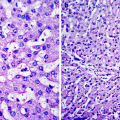and LI Ning2
(1)
Radiology Department, Capital Medical University Beijing You’an Hospital, Beijing, China, People’s Republic
(2)
Capital Medical University Beijing You’an Hospital, Beijing, China, People’s Republic
Abstract
Pulmonary function tests are a group of non-invasive tests examining the gas exchange function of lungs. Lung disorders cause oxygen deficiency of the body, which would result in impairments of all organs in the body. By pulmonary function tests, physician can understand the pulmonary functions or the severity of lung impairments, then it can facilitate physicians to stop its development by adopting adequate interventions, which is the importance of pulmonary function tests.
7.1 Pulmonary Function Tests
Pulmonary function tests are a group of non-invasive tests examining the gas exchange function of lungs. Lung disorders cause oxygen deficiency of the body, which would result in impairments of all organs in the body. By pulmonary function tests, physician can understand the pulmonary functions or the severity of lung impairments, then it can facilitate physicians to stop its development by adopting adequate interventions, which is the importance of pulmonary function tests.
Pulmonary function can be examined by multiple tests, which facilitate physicians to understand the physiological condition of the pulmonary system. In addition, physician can also know about the mechanism, type and severity of the pulmonary impairment and evaluate the residue lung functions for formulation of adequate interventions.
7.1.1 Lung Capacity Test (Static Lung Capacity)
The lung capacity test measures a total of eight indices including tidal volume, inspiratory reserve volume, expiratory reserve volume, residual volume, inspiratory capacity, vital capacity, functional residual capacity and total lung capacity. The lung ventilation function test examines indices of minute ventilation, alveolar ventilation, maximal breathing capacity, forced lung capacity and peak expiratory flow.
Tidal Volume (VT): the lung volume representing the normal volume of air displaced between normal inspiration and expiration when extra effort is not applied. In a healthy, young adult, VT is approximately 500 mL per inspiration
Inspiratory Reserve Volume (IRV): the maximal volume that can be inhaled from the end-inspiratory level. In a healthy, young adult, IRV is approximately 2.16 L for men and 1.5 L for women.
Expiratory Reserve Volume (ERV): the maximal volume of air that can be exhaled from the end-expiratory position. In a healthy, young adult, ERV is approximately 0.9 L for men and 0.56 L for women.
Residual Volume (RV): the volume of air remaining in the lungs after a maximal exhalation. In a healthy, young adult, RV is approximately (1.380 + 0.631) L for men and (1.301 + 0.466) L for women.
Inspiratory Capacity (IC): the maximal volume of air that can be inhaled after quiet breathing (VT+IRV).
Vital Capacity (VC): the maximal (sum) volume of air that can be exhaled after a maximum inhalation (VT+IRV+ERV). In a healthy, young adult, VC is approximately 3.5 L for men and 2.4 L for women.
Functional Residual Capacity (FRC): the volume in the lungs at the end-expiratory position (ERV+RV). In a healthy, young adult, FRC is approximately (2.77 + 0.8) L for men and (1.86 + 0.5) L for women.
7.1.2 Lung Ventilation Function Test
Lung ventilation function test examines occurrence of ventilation dysfunction as well as the nature and severity of the dysfunction, which constitutes a supplementary measure for the diagnosis of pulmonary disorders.
7.1.3 Arterial Blood Gas Analysis
As an important test examining the pulmonary ventilation function, arterial blood gas analysis examines indices including arterial oxygen tension (PaO2) and arterial carbon dioxide tension (PaCO2), pH value, standard base, buffer base and base excess. Based on the values of these indices, physicians can decide the occurrence of hypoxia and its severity, the occurrence of acid-base imbalance and its type and severity. In addition, these indices will provide evidence for operations of surgery, anesthesia, intensive care and life rescuing.
7.2 Clinical Significance of Blood Gas Analysis
7.2.1 Blood pH Value
Normal Range. 7.35–7.45 by blood gas analyzer
Clinical Significance. Blood pH is constantly in a weak-base condition. A pH value being less than 7.35 indicates acidaemia and a pH value being over 7.45 alkalemia. Both conditions may be secondary to metabolic and respiratory illnesses. However, normal pH value cannot definitely exclude acid-base imbalance.
7.2.2 pH Value of Non-involvement of Respiration (pHNR)
Normal Range. 7.35–7.45 by blood gas analyzer
Stay updated, free articles. Join our Telegram channel

Full access? Get Clinical Tree




